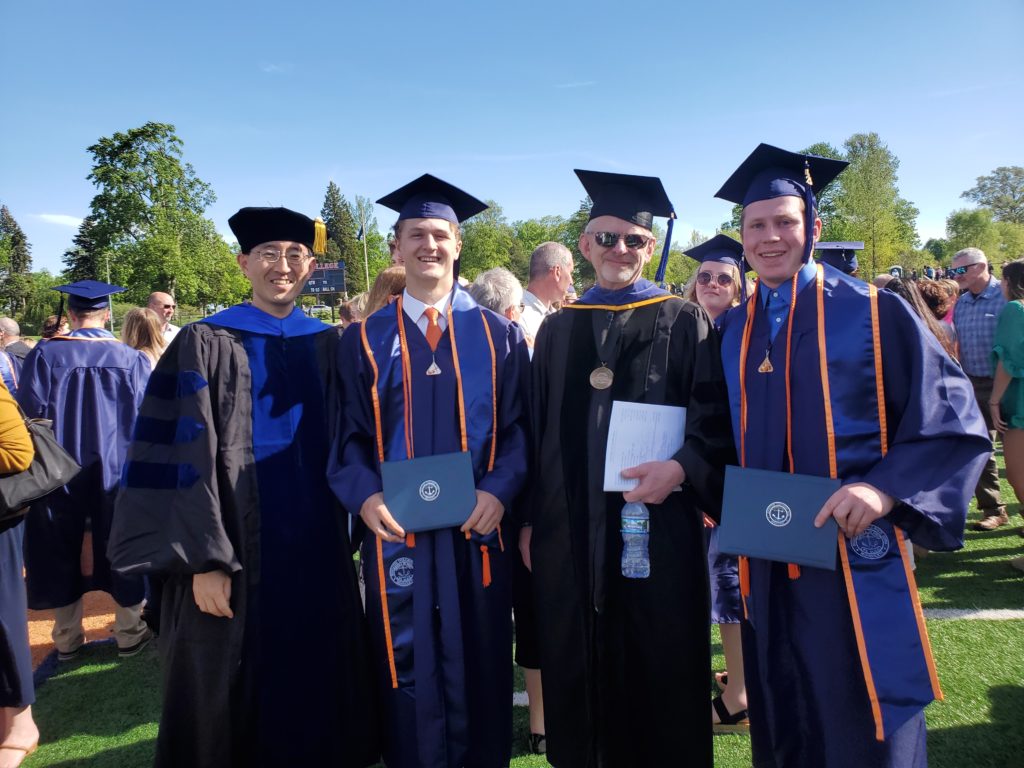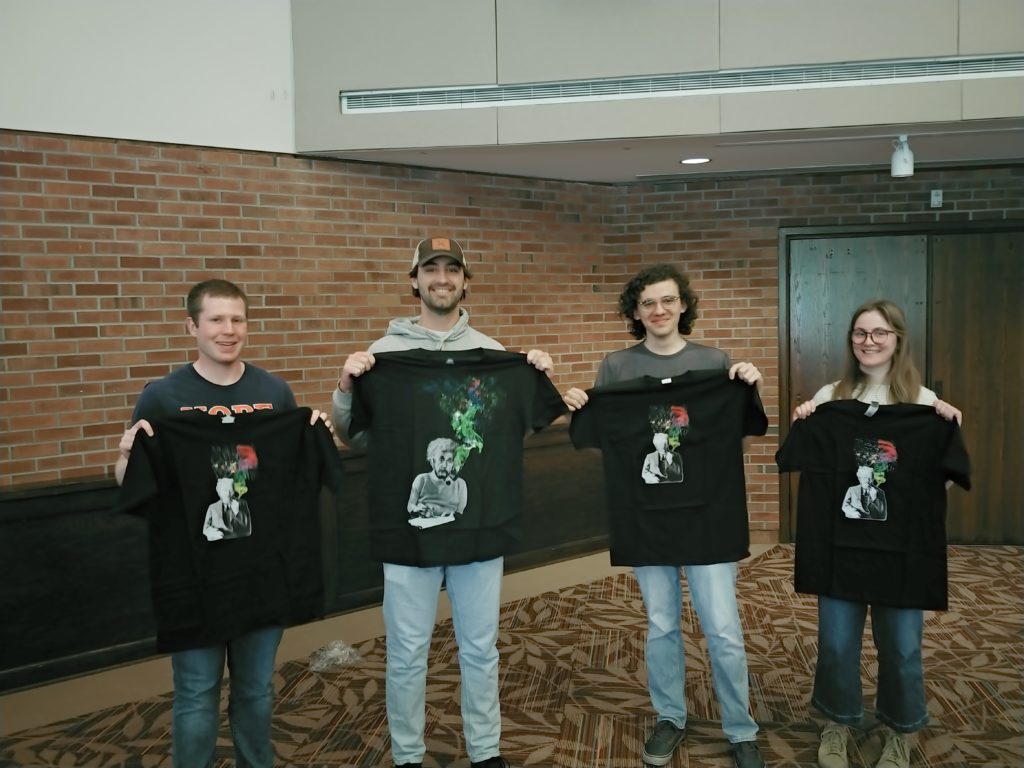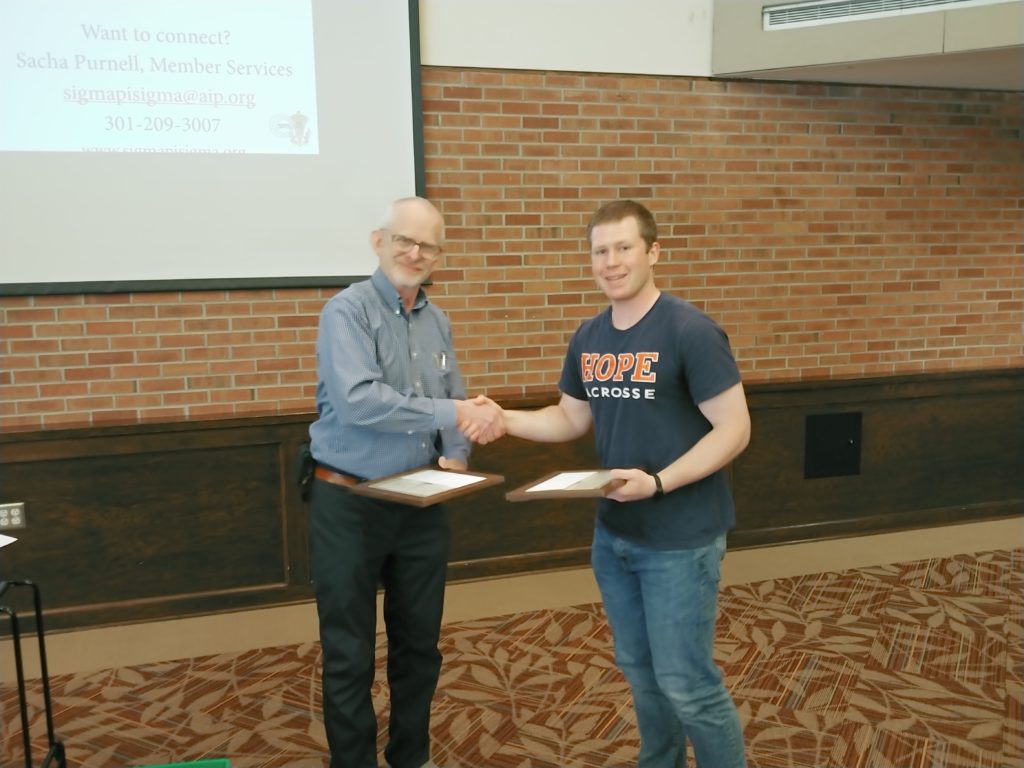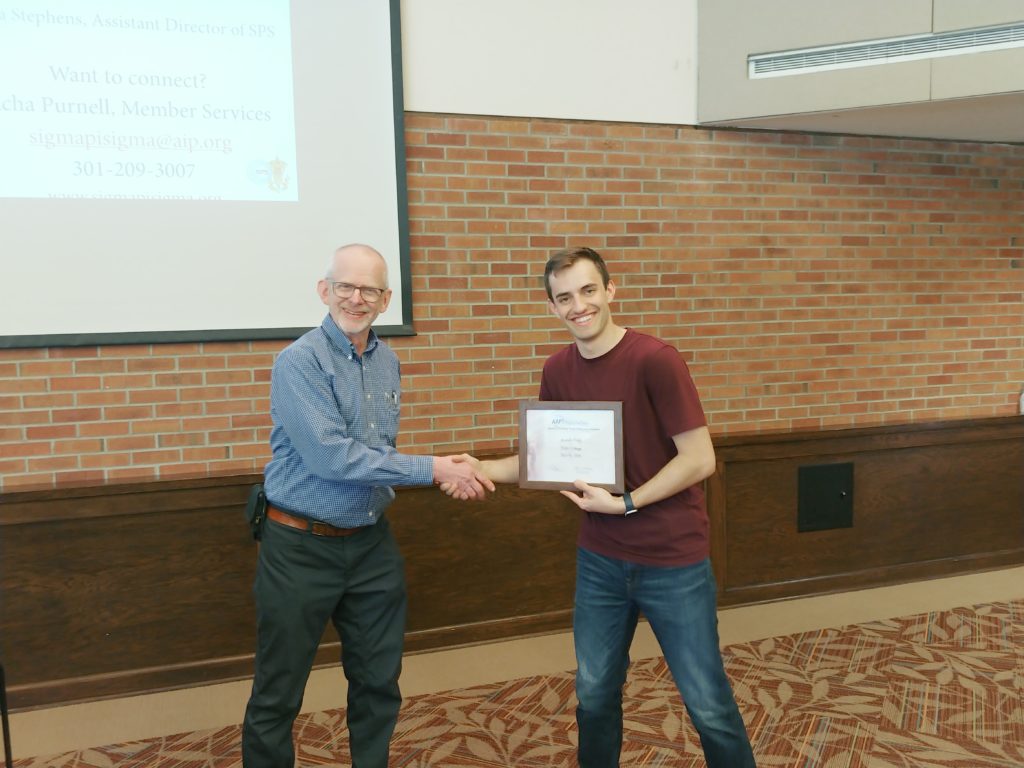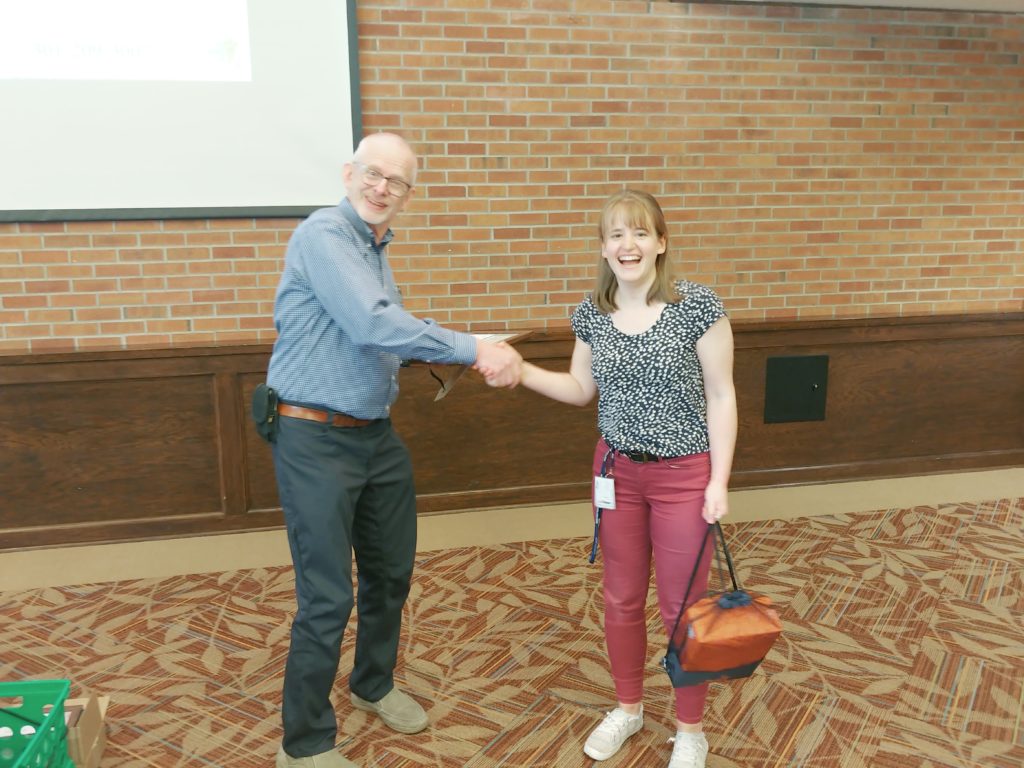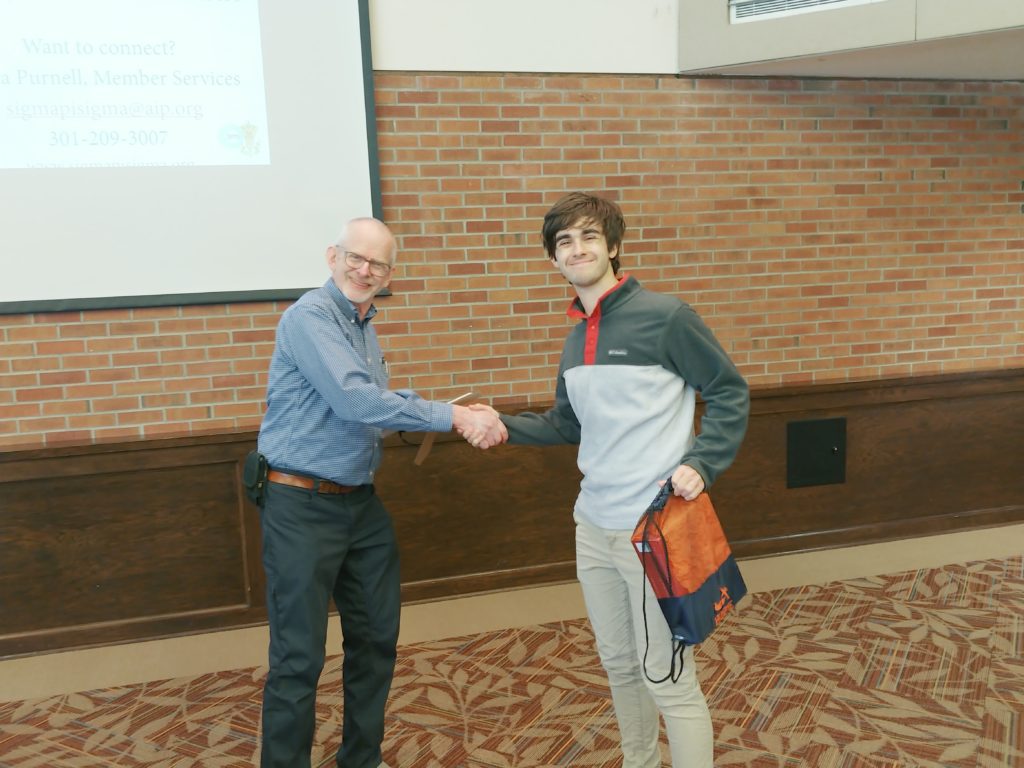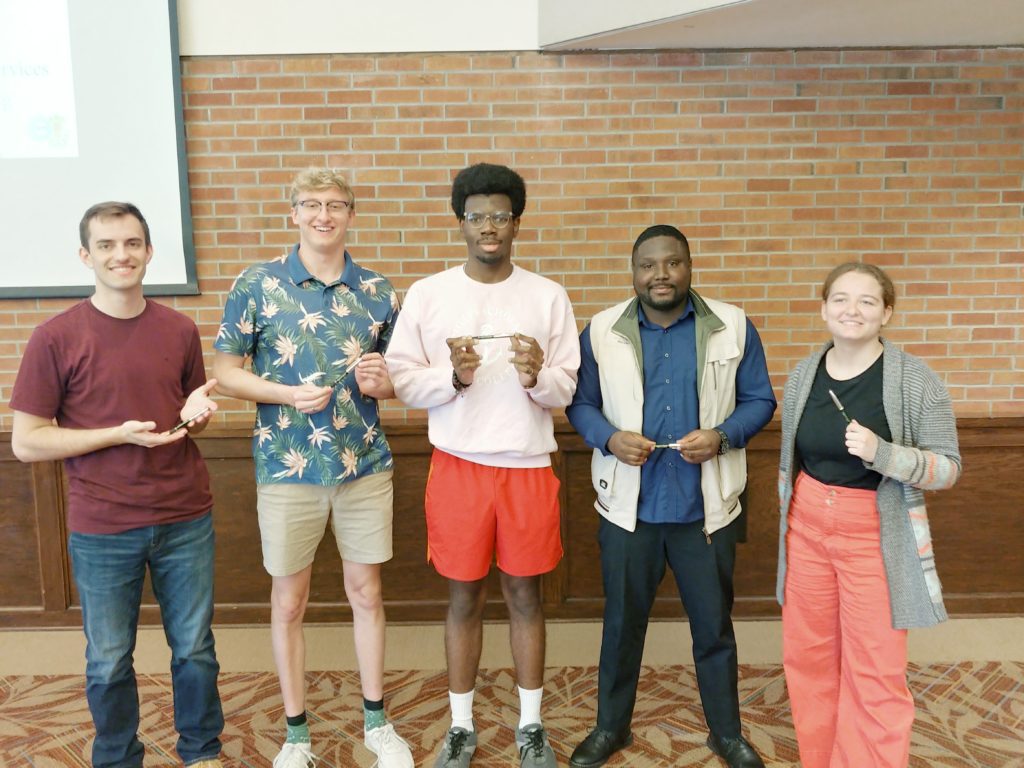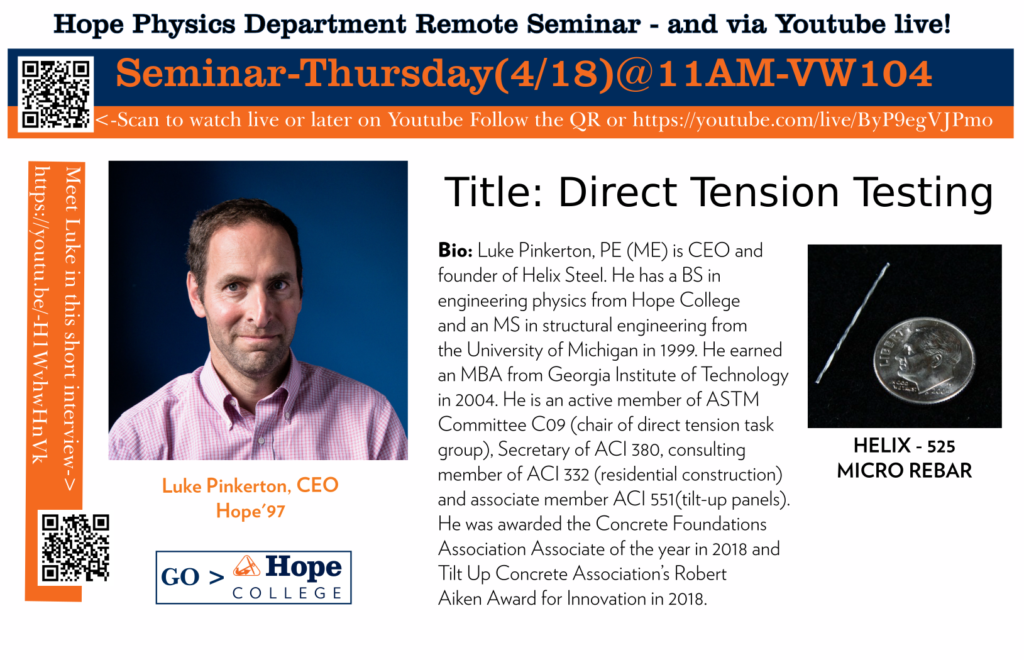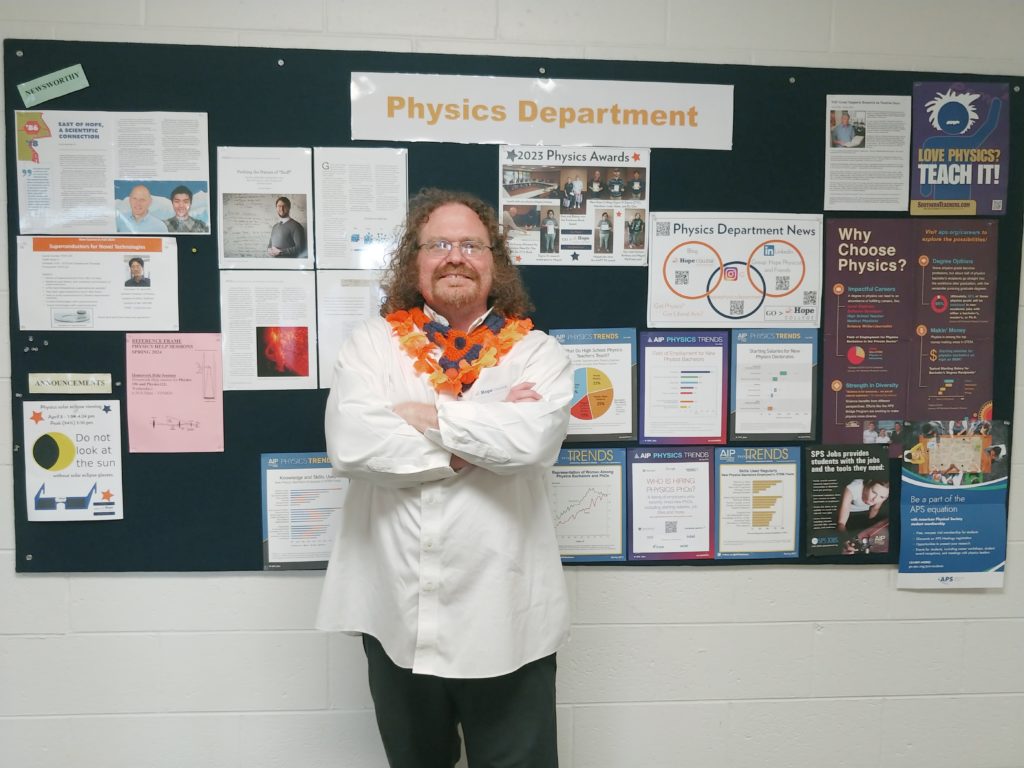1. “Analyzing Promethium Isotopes To Understand The Origin Of Heavy Elements In The Universe” by Godswill Ogudoro, Mentor Paul DeYoung
The origin of heavy elements in the universe is one of the most prevailing questions in current physics. The r-process is a set of nuclear reactions responsible for the creation of many of the current heavy elements in the universe. Historically, theories about how the r-process occurs have been unclear and flat-out wrong. We now have identified neutron star mergers as where the r-process occurs. I am currently analyzing Promethium isotopes which are an important step in the r-process to create a better model of how heavy elements came about.
2. “Characterization and Testing of SiPMs for a Next-Generation Neutron Detector” by Bishop Carl , Mentor Belen Monteagudo
MoNA-LISA is a position-sensitive neutron detector at the Facility for Rare Isotope Beams (FRIB) used to probe neutron-unbound states through invariant-mass spectroscopy. Position resolution of the neutron detector is a key factor in invariant-mass measurements. A better neutron position would significantly improve the overall reconstructed decay energy resolution and would therefore lead to a better understanding of nuclei near and beyond the dripline. The MoNA collaboration is designing a next-generation neutron detector to improve the current MoNA-LISA resolution (~5cm). The new design will replace the PMTs for SiPM arrays as readout technology. The use of SiPMs (more compact) for neutron detection is being tested within the Collaboration and its performance characterized with a simple detector made up of a circuit board with SiPM sensors coupled to a plastic scintillator. The response of each SiPM has been studied (breakdown voltage and dark current count rate). As position sensitivity is a main requirement for the planned next-generation neutron detector, a multitude of tests with cosmic rays and collimated gamma sources, such as 60Co and 65Zn, have been performed as well to evaluate the new design’s position resolution. Along with these tests, algorithms have been developed to reconstruct the interaction point based on the light collected by the SiPMs. Preliminary results of these ongoing tests will be presented.
